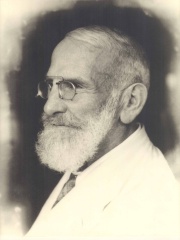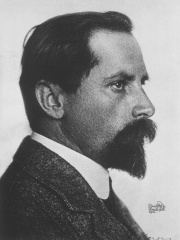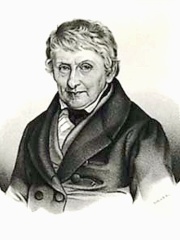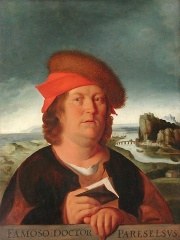
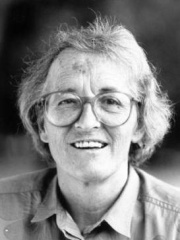
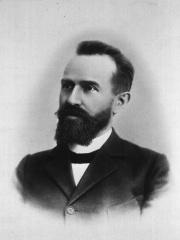
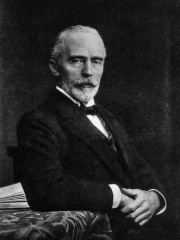
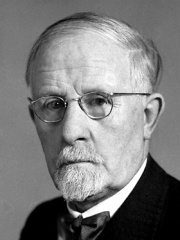
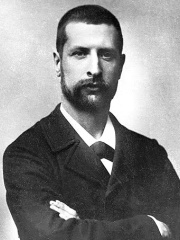


The Most Famous
PHYSICIANS from Switzerland
This page contains a list of the greatest Swiss Physicians. The pantheon dataset contains 502 Physicians, 15 of which were born in Switzerland. This makes Switzerland the birth place of the 9th most number of Physicians behind Netherlands and Turkey.
Top 10
The following people are considered by Pantheon to be the top 10 most legendary Swiss Physicians of all time. This list of famous Swiss Physicians is sorted by HPI (Historical Popularity Index), a metric that aggregates information on a biography’s online popularity. Visit the rankings page to view the entire list of Swiss Physicians.

1. Paracelsus (1493 - 1541)
With an HPI of 81.43, Paracelsus is the most famous Swiss Physician. Her biography has been translated into 75 different languages on wikipedia.
Paracelsus (; German: [paʁaˈtsɛlzʊs]; c. 1493 – 24 September 1541), born Theophrastus von Hohenheim (full name Philippus Aureolus Theophrastus Bombastus von Hohenheim), was a Swiss physician, alchemist, lay theologian, and philosopher of the German Renaissance. He was a pioneer in several aspects of the "medical revolution" of the Renaissance, emphasizing the value of observation in combination with received wisdom. He is credited as the "father of toxicology". Paracelsus also had a substantial influence as a prophet or diviner, his "Prognostications" being studied by Rosicrucians in the 17th century. Paracelsianism is the early modern medical movement inspired by the study of his works.

2. Elisabeth Kübler-Ross (1926 - 2004)
With an HPI of 68.45, Elisabeth Kübler-Ross is the 2nd most famous Swiss Physician. Her biography has been translated into 35 different languages.
Elisabeth Kübler-Ross (July 8, 1926 – August 24, 2004) was a Swiss-American psychiatrist, a pioneer in near-death studies, and author of the internationally best-selling book, On Death and Dying (1969), where she first discussed her theory of the five stages of grief, also known as the "Kübler-Ross model". Kübler-Ross was a 2007 inductee into the National Women's Hall of Fame, was named by Time as one of the "100 Most Important Thinkers" of the 20th century and was the recipient of nineteen honorary degrees. By July 1982, Kübler-Ross had taught 125,000 students in death and dying courses in colleges, seminaries, medical schools, hospitals, and social-work institutions. In 1970, she delivered an Ingersoll Lecture at Harvard University on the theme On Death and Dying.

3. Eugen Bleuler (1857 - 1939)
With an HPI of 66.84, Eugen Bleuler is the 3rd most famous Swiss Physician. His biography has been translated into 46 different languages.
Paul Eugen Bleuler (; German: [ˈɔɪɡeːn ˈblɔɪlər]; 30 April 1857 – 15 July 1939) was a Swiss psychiatrist and humanist most notable for his contributions to the understanding of mental illness. He coined several psychiatric terms including "schizophrenia", "schizoid", "autism", depth psychology and what Sigmund Freud called "Bleuler's happily chosen term ambivalence".

4. Emil Theodor Kocher (1841 - 1917)
With an HPI of 66.80, Emil Theodor Kocher is the 4th most famous Swiss Physician. His biography has been translated into 59 different languages.
Emil Theodor Kocher (25 August 1841 – 27 July 1917) was a Swiss physician and medical researcher who received the 1909 Nobel Prize in Physiology or Medicine for his work in the physiology, pathology and surgery of the thyroid. Among his many accomplishments are the introduction and promotion of aseptic surgery and scientific methods in surgery, specifically reducing the mortality of thyroidectomies below 1% in his operations. He was the first Swiss citizen and first surgeon to ever receive a Nobel Prize in Medicine. He was considered a pioneer and leader in the field of surgery in his time.
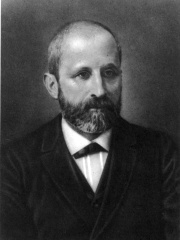
5. Friedrich Miescher (1844 - 1895)
With an HPI of 64.79, Friedrich Miescher is the 5th most famous Swiss Physician. His biography has been translated into 35 different languages.
Johannes Friedrich Miescher (13 August 1844 – 26 August 1895) was a Swiss physician and biologist. He was the first scientist to isolate nucleic acid in 1869. He also identified protamine and made several other discoveries. Miescher had isolated various phosphate-rich chemicals, which he called nuclein (now nucleic acids), from the nuclei of white blood cells in Felix Hoppe-Seyler's laboratory at the University of Tübingen, Germany, paving the way for the identification of DNA as the carrier of inheritance. The significance of the discovery, first published in 1871, was not at first apparent, and Albrecht Kossel made the initial inquiries into its chemical structure. Later, Miescher raised the idea that the nucleic acids could be involved in heredity and even posited that there might be something akin to an alphabet that might explain how variation is produced.

6. Walter Rudolf Hess (1881 - 1973)
With an HPI of 64.40, Walter Rudolf Hess is the 6th most famous Swiss Physician. His biography has been translated into 51 different languages.
Walter Rudolf Hess (17 March 1881 – 12 August 1973) was a Swiss physiologist who won the Nobel Prize in Physiology or Medicine in 1949 for mapping the areas of the brain involved in the control of internal organs. He shared the prize with Egas Moniz.

7. Alexandre Yersin (1863 - 1943)
With an HPI of 63.89, Alexandre Yersin is the 7th most famous Swiss Physician. His biography has been translated into 33 different languages.
Alexandre Emile Jean Yersin (22 September 1863 – 1 March 1943) was a Swiss-French physician and bacteriologist. He is remembered as the co-discoverer of the bacillus responsible for the bubonic plague or pest, which was later named in his honour: Yersinia pestis. Another bacteriologist, the Japanese physician Kitasato Shibasaburō, is often credited with independently identifying the bacterium a few days earlier. Yersin also demonstrated for the first time that the same bacillus was present in the rodent as well as in the human disease, thus underlining the possible means of transmission.

8. Albrecht von Haller (1708 - 1777)
With an HPI of 61.76, Albrecht von Haller is the 8th most famous Swiss Physician. His biography has been translated into 33 different languages.
Albrecht von Haller (also known as Albertus de Haller; 16 October 1708 – 12 December 1777) was a Swiss anatomist, physiologist, naturalist, encyclopedist, bibliographer and poet. A pupil of Herman Boerhaave and Jacob Winslow, he is sometimes referred to as "the father of modern physiology."

9. Rolf M. Zinkernagel (1944 - )
With an HPI of 58.21, Rolf M. Zinkernagel is the 9th most famous Swiss Physician. His biography has been translated into 43 different languages.
Rolf Martin Zinkernagel AC (born 6 January 1944) is a professor of experimental immunology at the University of Zurich. Along with Peter C. Doherty, he shared the 1996 Nobel Prize in Physiology or Medicine for the discovery of how the immune system recognizes virus-infected cells.
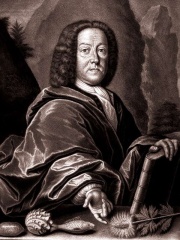
10. Johann Jakob Scheuchzer (1672 - 1733)
With an HPI of 53.05, Johann Jakob Scheuchzer is the 10th most famous Swiss Physician. His biography has been translated into 17 different languages.
Johann Jakob Scheuchzer (2 August 1672 – 23 June 1733) was a Swiss physician and natural scientist born in Zürich. His most famous work was the Physica sacra in four volumes, which was a commentary on the Bible and included his view of the world, demonstrating a convergence of science and religion. It was richly illustrated with copperplate etchings and came to be called the Kupfer-Bibel or "Copper Bible". Scheuchzer supported Biblical creation, but his support for Copernican heliocentrism forced him to print his works outside Switzerland. He also supported antecedent concepts of Neptunism and considered fossils as evidence for the Biblical deluge. A fossil from Ohningen that he identified as a human drowned by the Flood was later identified as a Miocene salamander which was named after him as Andrias scheuchzeri.
Pantheon has 15 people classified as physicians born between 1493 and 1963. Of these 15, 2 (13.33%) of them are still alive today. The most famous living physicians include Rolf M. Zinkernagel and Daniel Mojon. The most famous deceased physicians include Paracelsus, Elisabeth Kübler-Ross, and Eugen Bleuler. As of April 2022, 1 new physicians have been added to Pantheon including Paracelsus.
Living Physicians
Go to all RankingsDeceased Physicians
Go to all Rankings
Paracelsus
1493 - 1541
HPI: 81.43
Elisabeth Kübler-Ross
1926 - 2004
HPI: 68.45
Eugen Bleuler
1857 - 1939
HPI: 66.84
Emil Theodor Kocher
1841 - 1917
HPI: 66.80
Friedrich Miescher
1844 - 1895
HPI: 64.79
Walter Rudolf Hess
1881 - 1973
HPI: 64.40
Alexandre Yersin
1863 - 1943
HPI: 63.89
Albrecht von Haller
1708 - 1777
HPI: 61.76
Johann Jakob Scheuchzer
1672 - 1733
HPI: 53.05
Maximilian Bircher-Benner
1867 - 1939
HPI: 51.34
Adolf Meyer
1866 - 1950
HPI: 49.98
Heinrich Rudolf Schinz
1777 - 1861
HPI: 49.56

Newly Added Physicians (2022)
Go to all RankingsWhich Physicians were alive at the same time? This visualization shows the lifespans of the 10 most globally memorable Physicians since 1700.


